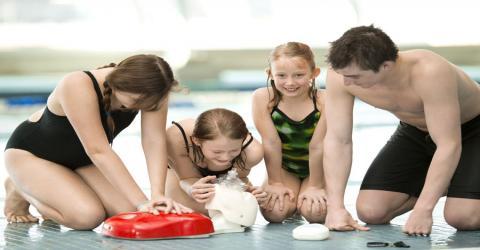The ABC of CPR

Cardiopulmonary resuscitation (CPR) is used when a person is in cardiac arrest, meaning that the victim is unconscious, does not breathe and shows no sign of circulation (pulse). Performing CPR allows oxygenated blood to be carried again to the brain and vital organs in order to keep the victim alive.
Cardiac arrests can be caused by various incidents such as drowning, a heart attack, a cerebrovascular accident (CVA), a drug overdose or a road accident.
When someone is in cardiopulmonary arrest, the rescuer first ensures they are in a safe environment, and then assesses the victim’s consciousness by gently tapping or pinching their shoulders.
If the victim is indeed unconscious, it is primordial that emergency medicals services (EMS) be called. While waiting for their arrival, the rescuer must make sure the victim’s airway is not obstructed by using the head-tilt/chin-lift technique. This technique is performed by placing a hand on the victim’s forehead while pressing two fingers under the victim’s chin.
If the victim does not breathe normally, CPR cycles must immediately be performed starting with chest compressions, with 30 chest compressions followed by 2 breaths. However, drowning victims must be resuscitated by starting with 2 breaths before executing chest compressions.
To perform a chest compression, the heel of the hand must be placed on the middle of the victim’s sternum while keeping elbows locked straight. Compressions must be 5 cm (2 in.) deep, and the chest must be allowed to fully recoil.
CPR must be performed rapidly (at least 100 compressions per minute) to minimize risks of permanent neurological damage, and in a continuous manner to maintain cardiac activity until the EMS arrive.
Click here to see a quick reference sheet on CPR from the Lifesaving Society (in French only).





